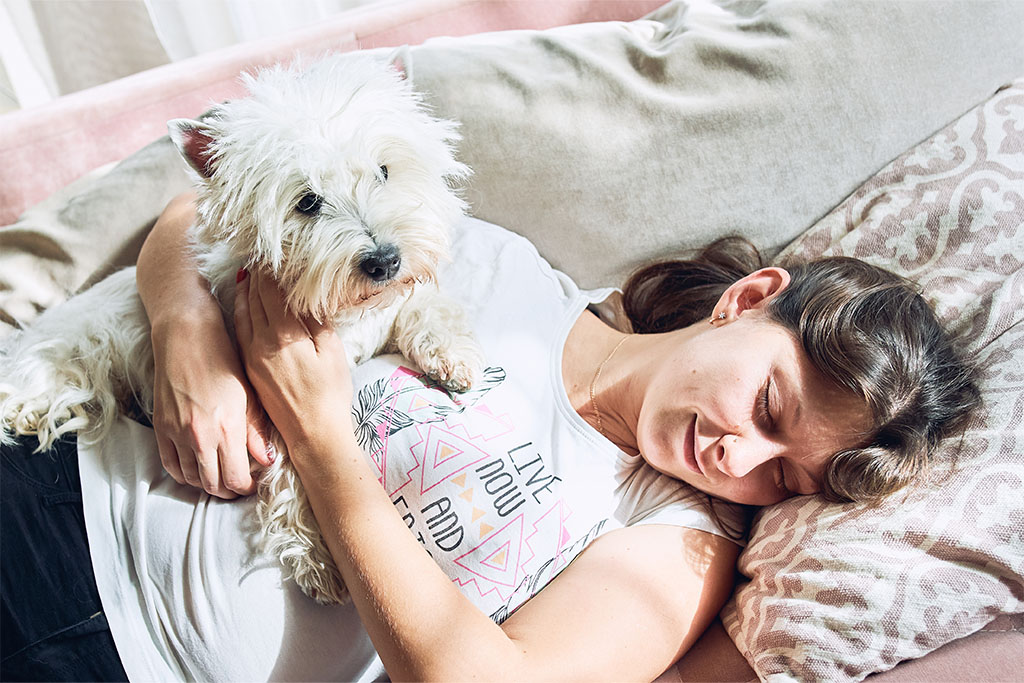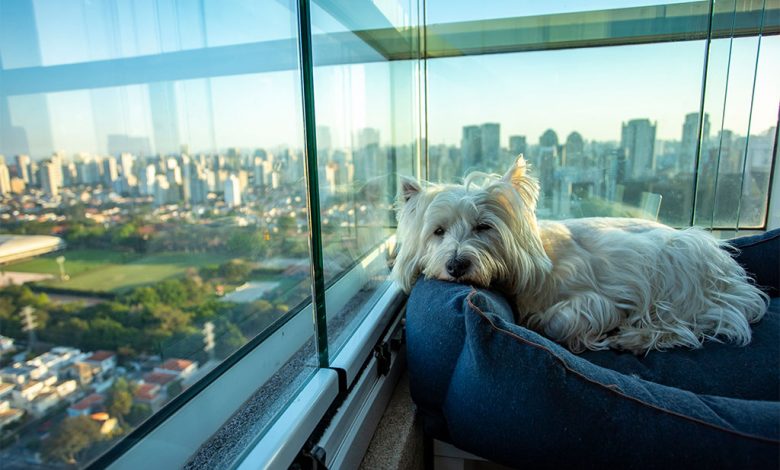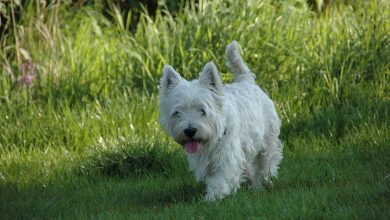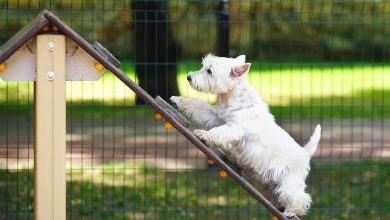How is your Westie coping with your toing and froing?
In simple terms separation anxiety is triggered when dogs become upset when they are parted from their owners. Dogs can exhibit extreme distress which often starts within minutes of their guardians leaving or in extreme cases simply being out of the room. Anxious dogs may bark, whine, pace, chew inappropriate things, howl, urinate, defecate and in the most severe cases may try and escape. Like any modification in behaviour, it takes time and lots of patience in order to change things for the dog.
In an ideal world training would begin as soon as the dog arrives at its new home, whether it is a puppy or a more mature dog that has been rehomed. The aim is always to make the dog feel safe and more confident about being left alone for a short period of time. Puppies should not be left too long as they need feeding more regularly and there’s the all-important house training to tackle as well.
Unfortunately, though we don’t live in an ideal world and too many people end up trying to tackle the problem after the anxiety has had time to become ingrained. There are many reasons that separation anxiety can be triggered and as more people have had to work from home dogs have become used to having their families around. As our routines start to revert back or change again then the poor dogs may have difficulty in dealing with the changes. In order to help dogs suffering from separation anxiety there are a few tips that should help as long as one bears in mind that there is no instant cure.
Top 10 Tips
1. Make sure your Westie has a safe space to settle in. This could be a room or a couple of rooms. Using baby gates can help protect the rest of your house.
2. Never make a big thing about leaving or arriving. If your Westie jumps up and is excited when you get back, then ignore them until they calm down.
3. Leave a piece of clothing of yours that smells of you. Pop this into a bed where you want your dog to settle.
4. Offer your Westie something fun to do whilst you’re away. Some things to try are puzzle games, snuffle mats, or a toy stuffed with delicious treats. We all know about Kongs but there are other similar toys available. Fill with something like peanut butter, cheese, favourite fruits, dehydrated treats, anything that will keep them occupied for at least half an hour. Take the toy away as soon as you get back, it is reserved for only when you are away. I have even seen people filling boxes with newspaper and treats, just be prepared to pick up shredded paper on your return.
5. Take your dog for a walk before you want to go out and maybe feed a snack, so they are more sated. A dog that has had a chance to toilet and has had some exercise is more likely to relax. However, don’t hurry the process and walk at least half an hour before going out so you don’t form a new association.

6. If your Westie is more likely to bark by people walking by and noises outside then close the curtains or blinds and pop the radio on. Ideally move them to a quieter part of the house but if this isn’t possible then minimising the triggers is the best thing to do.
7. This one may sound obvious but get a dog walker or even a dog sitter.
8. Never tell your dog off, it quite simply will not understand your anger when they are just relieved to see you return. The whole idea is to remain calm and remember everything takes time.
9. Whilst I don’t often advocate medicating there are several natural remedies that might be worth trying for the worst cases.
10. If all else fails, get professional help! If you can’t get a recommendation for a behaviourist or trainer then a good place to start is the IMDT (educators for dog trainers and behaviourists) website. People registered on here have had to meet specific criteria and will work using force free methods.






